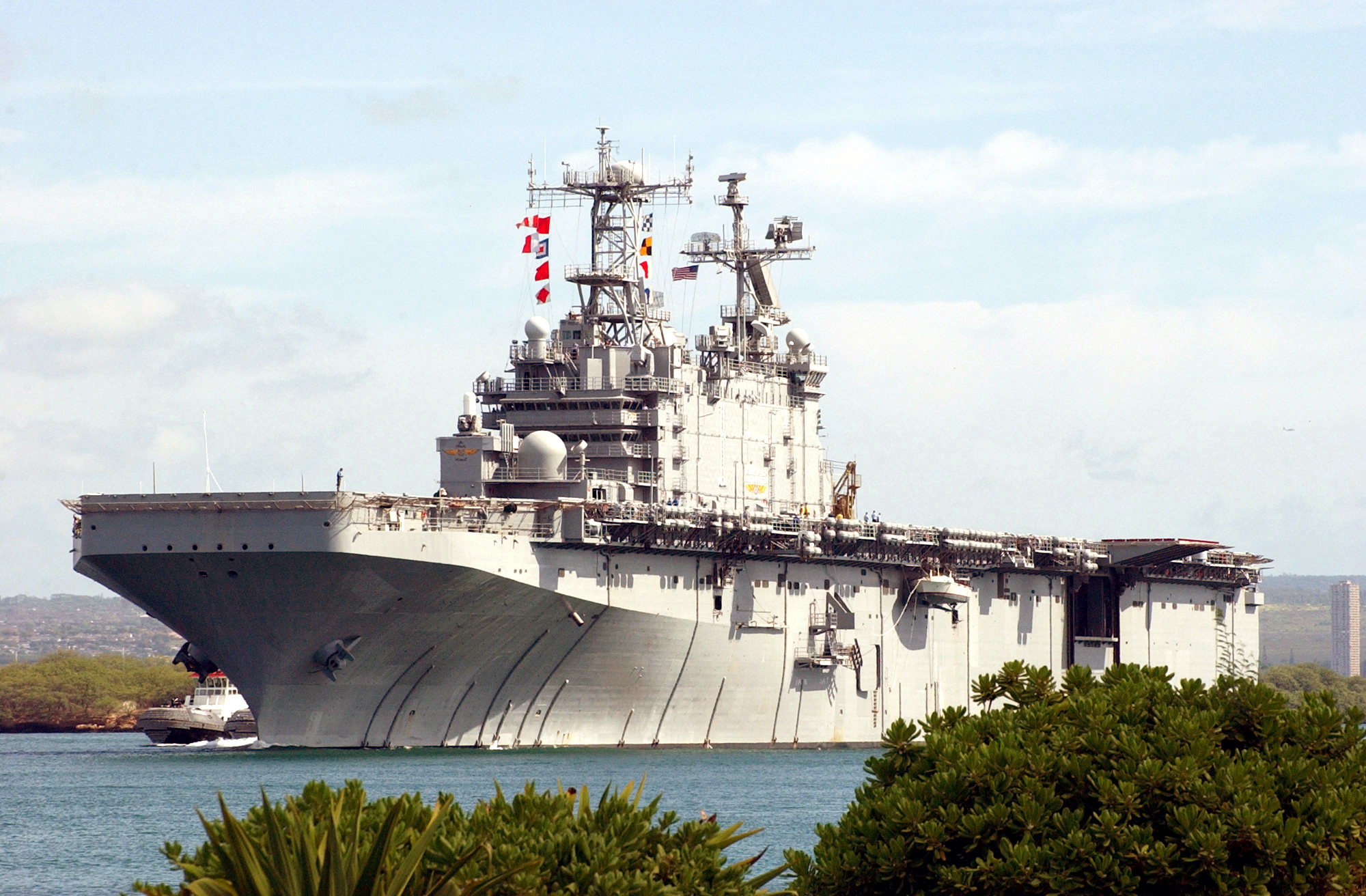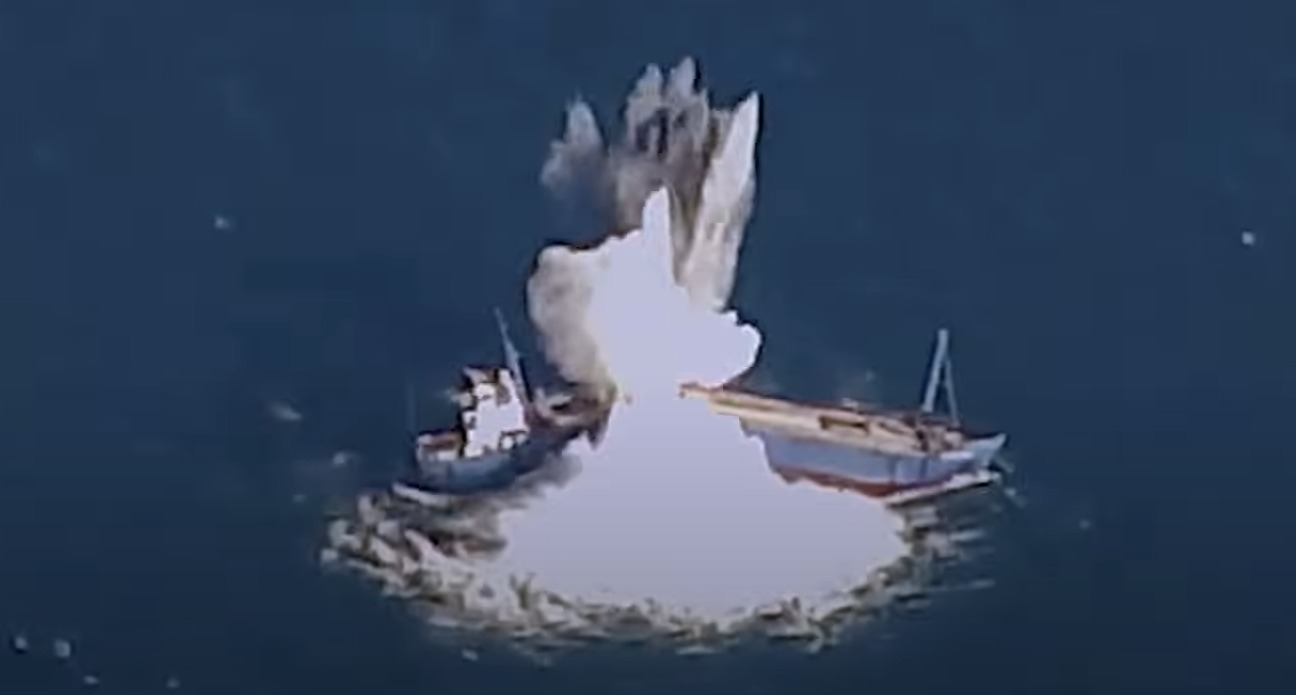In a display that may have drawn significant attention from China, the United States used its B-2 Spirit stealth bomber during the Rim of the Pacific (RIMPAC) exercises to sink the decommissioned warship, the USS Tarawa. Interestingly, the bomber launched a new, cost-effective missile to take down the enormous vessel.
As part of the multi-national maritime and aerial drills RIMPAC conducted earlier this month, two warships — the ex-USS Tarawa (an amphibious assault ship) and the ex-USS Dubuque (an amphibious transport dock) — were sunk by the US using live ammunition.
The US military’s most advanced maritime strike weapon, the stealthy Long-Range Anti-Ship Missile (LRASM), was fired from a US Navy F/A-18F Super Hornet this year, striking USS Tarawa. However, the military also employed its B-2 Stealth bomber, which fired the low-cost QUICKSINK missile.
The test was deemed “very significant,” as it is believed that it could be employed in a potential conflict with China. The missile was fired from the B-2 bomber to destroy the defunct USS Tarawa amphibious assault ship, which measured 820 feet in length with a displacement of around 40,000 tons.
The US Navy announced the test of the all-new weapon in a press release: “This capability is an answer to an urgent need to quickly neutralize maritime threats over massive expanses of ocean around the world at minimal costs.”
AfriPrime App link: FREE to download...
https://www.amazon.com/Africircle-AfriPrime/dp/B0D2M3F2JT
The exercise demonstrated that the US military could use a low-cost guided bomb to sink a large surface ship using one of its most resilient weapon systems, the B-2 Spirit stealth bomber. The bomber is the mainstay of the US Air Force’s bomber fleet and is anticipated to play a crucial role in any future conflict in the Indo-Pacific.
The B-2 bomber’s stealth features allow it to operate at high altitudes with minimal chances of detection by radar, enabling it to penetrate heavily defended airspaces. This grants a battlefield perspective that lower-flying aircraft cannot achieve with their sensors. So, outfitting this bomber with a lethal yet inexpensive missile is promising.
The test might have caught China’s attention, as the B-2 has shown a maritime capability that could be crucial in any potential conflict in the Taiwan Strait or the disputed South China Sea. Recent war games have indicated that the US would quickly deplete its long-range anti-ship missile stockpile in an armed confrontation with China.
These new low-cost anti-ship missiles would provide a key capability to the United States, especially since the defense budgets are tight.

More significantly, China would have been observing the test and the SINKEX (Sink Exercise) for another reason: the USS Tarawa has a displacement similar to that of China’s Type 075 amphibious assault ship as pointed out by Chinese experts.
Last month, Chinese state-owned media Global Times published a report stating that the 40,000-ton target ship was being sunk to “show off the capability to destroy a Chinese amphibious assault ship or aircraft carrier amid current tensions in Taiwan Straits and the South China Sea.”
The USS Tarawa’s displacement is around 39,000 to 40,000 tons, which, according to analysts, is similar to that of some Chinese ships like the Type 075. Earlier, experts suggested that the US and its allies would have a rare opportunity to gather data about weapon efficacy and the ability of huge, well-protected warships to withstand various threats by sinking the USS Tarawa.
The test of the QUICKSINK missile is, thus, significant.

What Is The QUICKSINK?
The Office of the Under Secretary of Defense for Research and Engineering is funding the QUICKSINK project, which the fleet stated “…aims to provide options to neutralize surface maritime threats while demonstrating the inherent flexibility of the joint force”.
First tested a few years ago, the QUICKSINK experimental weapon combines new seeker technology with existing Joint Direct Attack Munition guidance kits to enable the munition to precisely zero in on a moving or stationary target at sea.
AfriPrime App link: FREE to download...
https://www.amazon.com/Africircle-AfriPrime/dp/B0D2M3F2JT
In terms of weapon guidance, the QUICKSINK kit combines the GPS-assisted inertial navigation system (INS) guidance already present in the tail of a GBU-31/B Joint Direct Attack Munition with a newly installed radar seeker on the nose and an IIR (Imaging Infra-Red) camera housed in a side fairing.
When detonated, the bomb glides to the target location using the conventional JDAM kit and locks onto the ship using the seeker/camera. The guidance mechanism causes the bomb to explode close to the hull below the waterline as soon as lock-on is obtained.
Equipping the B-2 bomber with reasonably priced and proven precision-guided bombs with payloads up to 2,000 pounds might provide the Air Force bombers with the “anti-ship lethality” of a submarine-launched torpedo without the vulnerability-based drawback of a submarine.
The Air Force Research Lab (AFRL) says, “A Navy submarine can launch and destroy a ship with a single torpedo at any time, but by launching that weapon, it gives away its location and becomes a target.” It further emphasized that QUICKSINK could provide “a low-cost method of achieving torpedo-like seaworthy kills from the air at a much higher pace and over a much larger area than covered by a lumbering submarine.”
With the use of such a weapon, the US and its allies would have more options for maritime strikes, particularly in a conflict in the Pacific where fighting may occur across wide areas of open sea. Over the years, the several branches of the US military have been chasing ever-increasing anti-ship capabilities.
“Torpedoes, such as the heavyweight MK-48, are still the primary method used to sink enemy ships,” the Air Force Research Laboratory stated regarding this type of warfare, but “new methods explored through QUICKSINK may be able to achieve the same kind of anti-ship lethality with air-launched weapons, including modified 2,000-pound class precision-guided bombs.”
The QUICKSINK was reportedly tested by a F-15E fighter jet in 2021 and 2022. As per AFRL, the program remains a “technology demonstration” rather than a front-line weapon.
Much to the US military’s advantage, the B-2 Spirit could turn out to be a potent and useful weapon in the event of an Indo-Pacific war with its capacity to carry 16 QUICKSINK missiles- a low-cost solution that could obliterate heavy, expensive vessels.
AfriPrime App link: FREE to download...


